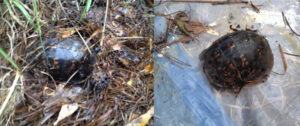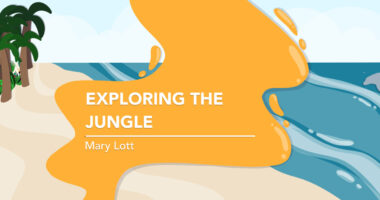Finding common ground with turtles, thanks to CAD symptoms
Fatigue causes me to move much more slowly these days

“Mike, stop!” I yelled at my boyfriend, now husband, as we crossed an intersection in Auburn, Alabama. “Let me move that turtle out of the way.”
A few disgruntled drivers were in cars behind us. As a soft-hearted nature lover, I made everyone wait while I dealt with this more important matter. This turtle was most likely of the Eastern box subspecies, which the International Union for Conservation of Nature classifies as vulnerable globally. I did my small bit of good work that day back in the 1970s.
In doing so, I learned a few things about turtles. They get mad. They hiss. And this particular turtle, not realizing the danger it was in, wanted no part of my much-needed assistance. This turtle also had a particularly long neck.
So instead of endangering my fingers by picking it up, thereby putting them in range of its mouth, I stood beside the creature and made shooing noises. It took longer than the drivers behind us preferred, but eventually the turtle made its way safely across the road, oblivious to what I, its noble savior, had done.
I have a lot in common with turtles
These days, my movements have been compared with a turtle’s. I plod along my determined course of action, not too fast, but sometimes at a speed that aggravates my nearest and dearest. This wasn’t always the case. I only became turtle-like when I developed cold agglutinin disease (CAD) and subsequent fatigue.
CAD is a rare autoimmune disease in which red blood cells clump together and are destroyed at low temperatures — a process called hemolysis. My best defense against it is staying warm.
Most people, when comparing me with a turtle, are referring to my slow style of walking. But I used to be quite a speed-walker, especially in college. I remember carrying books and a musical instrument from Goodwin Music Hall at Auburn University down a hill, across a road, through the math and science building, then up another hill to Haley Center for a history or English class, a trip of more than a quarter-mile in about seven minutes.
Now it takes me seven minutes to walk from the gate to the plane, pulling just one piece of luggage on wheels. I arrive at my seat breathless and collapse. I’m much slower now than in college. It feels comparable to the box turtle’s average walking speed of 0.17 mph.
Not as obvious, however, are my other turtle-like characteristics — primarily my remaining indoors during winter. CADdies, or people with CAD, need to remain warm, so I start brumating, slowing down physical activities, just as turtles do during the cold months. I do it to avoid losing my breath from breathing cold air and especially to avoid acrocyanosis in my fingers and toes. I’ve invented a rhyme for that: “When my fingers turn blue, my blood becomes glue.”
In summertime, both turtles and I exhibit changed behaviors. We can often be seen basking in the sunlight. In addition to enjoying its warmth, I soak in the sun’s rays to help my body manufacture vitamin D. That’s used to strengthen my immune system.
CADdies and turtles are delicate species
Turtle populations need assistance with protection against ranavirus, a group of viruses that can cause systemic infections, hemorrhaging, and lethargy, along with other symptoms. At present, there’s no known treatment for ranavirus, which is why it’s critical to watch over turtle environments and conditions.
CADdies also need assistance from a vigilant medical team to help monitor our condition. Changes in the components of our blood should be evaluated at regular intervals. Currently, I’m mentally preparing for my regular checkup in June, when I’ll be asking about my IgM level. An elevation could indicate active disease, as these antibodies are responsible for hemolysis.
This Friday, May 23, is World Turtle Day, a time to recognize the role these creatures play in our ecosystem. As I, turtle-like, plod through my day, I remember that turtles are very determined in what they do. There’s an old story, attributed to the Greek storyteller Aesop, involving a tortoise and a hare. It reminds us that slow and steady wins the race.
Note: Cold Agglutinin Disease News is strictly a news and information website about the disease. It does not provide medical advice, diagnosis, or treatment. This content is not intended to be a substitute for professional medical advice, diagnosis, or treatment. Always seek the advice of your physician or other qualified health provider with any questions you may have regarding a medical condition. Never disregard professional medical advice or delay in seeking it because of something you have read on this website. The opinions expressed in this column are not those of Cold Agglutinin Disease News or its parent company, Bionews, and are intended to spark discussion about issues pertaining to cold agglutinin disease.







Leave a comment
Fill in the required fields to post. Your email address will not be published.